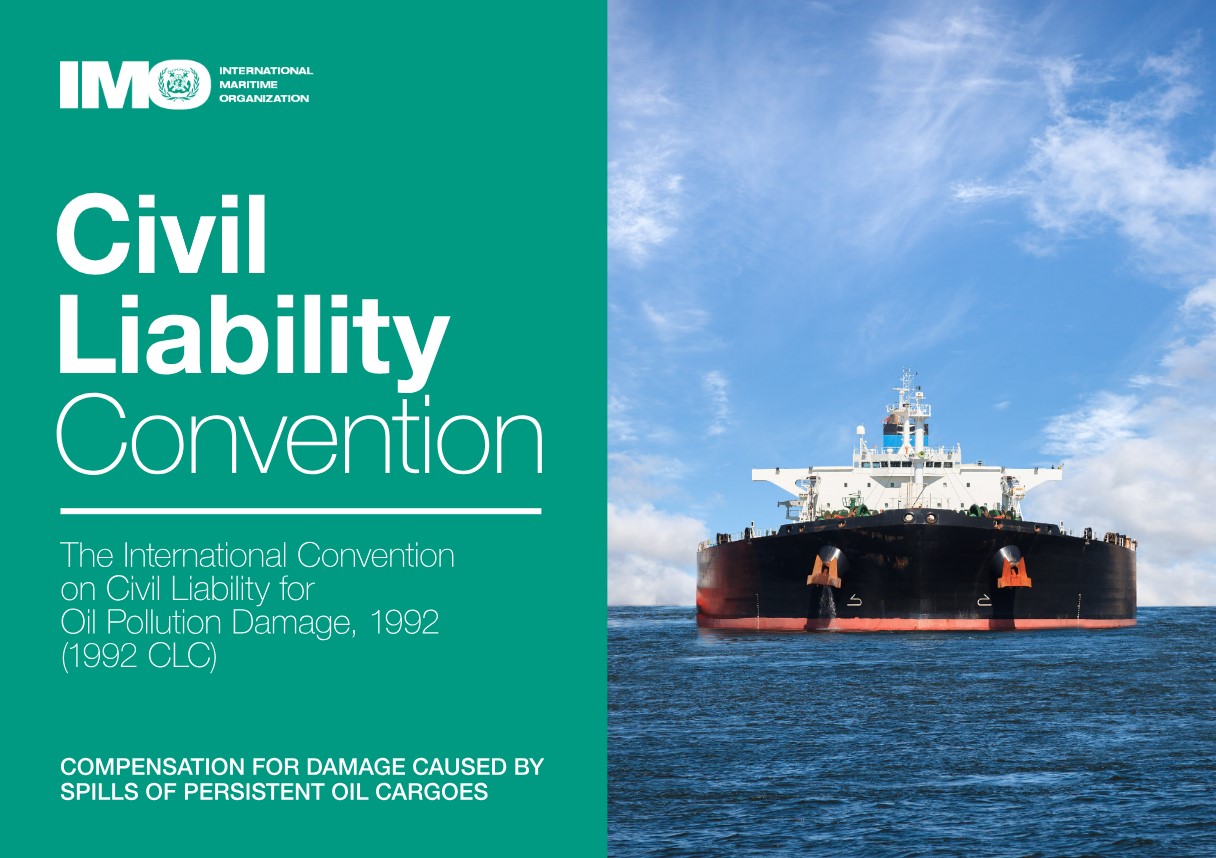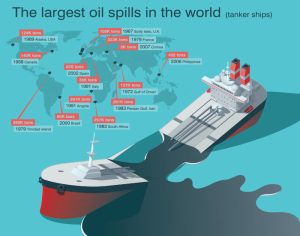
A Global Legal Framework for Accountability, Compensation, and Environmental Protection at Sea
Who Pays When the Sea Is Polluted?
When an oil tanker spills its cargo into the ocean, the environmental damage can be catastrophic—coastlines blackened, fisheries devastated, and marine life suffocated. But the big question that always follows is: Who is responsible? And who will pay for the cleanup, damages, and economic losses?
To answer this crucial question, the International Convention on Civil Liability for Oil Pollution Damage (CLC), 1969 was adopted. The CLC Convention ensures that shipowners are held financially accountable for pollution caused by oil spills from their vessels and that affected victims are compensated—swiftly and fairly.
This article explores the CLC Convention in depth, guiding beginners, students, professionals, and general readers through its purpose, structure, implementation, real-world impact, and modern-day relevance in global maritime law.
What Is the CLC Convention?
The International Convention on Civil Liability for Oil Pollution Damage, known as the CLC 1969, is an international treaty that establishes a liability regime for shipowners in cases of oil pollution damage caused by tanker spills.
Key Facts
-
Adopted: November 29, 1969 (Brussels, Belgium)
-
Entered into Force: June 19, 1975
-
Updated: 1992 Protocol (entered into force in 1996)
-
Administered by: International Maritime Organization (IMO)
-
Parties: 140+ countries (as of 2024), covering over 98% of world tanker tonnage
The Convention is designed to balance environmental protection with commercial shipping, ensuring legal clarity, financial responsibility, and victim compensation.
Historical Background: Why Was the CLC Needed?
Prior to the CLC, victims of oil pollution often faced legal obstacles in claiming compensation, and shipowners could evade liability through jurisdictional gaps or inadequate insurance.
The Turning Point: Torrey Canyon (1967)
In 1967, the oil tanker Torrey Canyon struck a reef off the coast of the UK, spilling over 100,000 tonnes of crude oil. It caused massive environmental destruction, but the lack of an international liability framework made compensation difficult and slow.
This disaster prompted the IMO to act—leading to the drafting and adoption of the CLC Convention in 1969.
Objectives and Principles of the CLC Convention
The CLC Convention serves three core objectives, each vital to maritime environmental governance and victim rights.
Main Goals:
-
Establish strict liability for shipowners—regardless of fault
-
Ensure compensation for pollution damage to people, property, and the environment
-
Mandate insurance coverage or financial security to guarantee that compensation is available
This means that even if the shipowner was not negligent, they are still responsible for damage caused by oil pollution, with limited exceptions.
How the CLC Convention Works
The CLC sets out a two-tier liability system: one for shipowners and one through a supplementary fund (established under a separate but connected treaty—the International Oil Pollution Compensation Fund).
1. Shipowner Liability
-
Strict liability: Shipowners are liable for oil pollution damage from their ships.
-
Exceptions: Liability is waived only in rare cases such as acts of war, intentional third-party sabotage, or government negligence in maintaining navigational aids.
2. Limitation of Liability
Shipowners can limit their liability based on the ship’s tonnage, unless it can be proven that the pollution was caused by intentional or reckless conduct.
Under the 1992 Protocol, the limits (as updated) are approximately:
-
Up to 4.5 million SDRs for small vessels (~$6 million USD)
-
Up to 89.7 million SDRs (~$120 million USD) for larger tankers (depending on size)
(SDR = Special Drawing Rights, an IMF-based currency unit)
3. Compulsory Insurance
All ships carrying more than 2,000 tonnes of oil in bulk must have insurance or financial security (e.g., from a Protection and Indemnity Club—P&I Club).
Victims can directly sue the insurer, even if the shipowner cannot be located or is insolvent.
What Is Covered Under the CLC?
The Convention covers:
-
Loss or damage outside the ship due to spilled oil
-
Costs of preventive measures to avoid or reduce pollution
-
Economic losses, such as loss of income in fisheries or tourism
-
Environmental damage, including clean-up and restoration costs
It applies to persistent oil carried as cargo (e.g., crude oil, fuel oil), not to oil carried as fuel or non-persistent oils like gasoline or diesel.
Real-World Applications and Case Studies
1. Erika (1999, France)
The sinking of the Erika tanker off the coast of France released 20,000 tonnes of heavy fuel oil. Under the CLC and IOPC Fund system, over $200 million in compensation was paid to fishermen, coastal communities, and the French government.
2. Hebei Spirit (2007, South Korea)
After a crane barge collided with the Hebei Spirit, more than 10,000 tonnes of oil spilled. Compensation through the CLC and Fund reached $300 million, demonstrating the efficacy of the international liability regime.
Credit: https://www.myseatime.com/blog/detail/a-basic-and-simple-guide-of-civil-liability-convention-92
Evolution: From CLC 1969 to the 1992 and 2000 Protocols
Over time, the original 1969 Convention was revised to adapt to larger tankers and inflationary trends.
The 1992 Protocol
-
Raised liability limits for shipowners
-
Extended scope to include environmental damage and preventative costs
-
Established the 1992 IOPC Fund to provide additional compensation if shipowner liability is exceeded
The 2000 Protocol (Supplementary Fund)
-
Added a third tier of compensation, raising the available compensation to 750 million SDRs (~$1 billion USD)
Today, most countries operate under the 1992 regime, and some under the Supplementary Fund Protocol.
Relevance for Key Audiences
For Beginners and General Readers
The CLC ensures that if oil pollutes your beach or harms your fishing business, there’s a clear path to compensation—and the polluter must pay, not the taxpayer.
For Students and Researchers
This Convention is a cornerstone of maritime law, international liability regimes, and environmental governance. It’s frequently studied in law schools, maritime academies, and public policy courses.
For Industry Experts and Insurers
P&I Clubs, ship operators, charterers, and port states depend on the CLC for:
-
Risk management
-
Insurance coverage design
-
Pollution preparedness and legal compliance
-
Claims processing
Modern Challenges and Key Debates
Despite its strong framework, the CLC faces several emerging issues.
1. Climate-Linked Marine Incidents
Increased storm activity and sea route volatility may lead to higher spill risks, raising questions about liability adequacy.
2. Ship-to-Ship Transfers and Grey Areas
Oil spills during bunkering or ship-to-ship transfers sometimes fall into regulatory grey zones, depending on location and vessel status.
3. Non-persistent Oil and Fuel Oil Spills
The CLC does not apply to fuel oil from non-tanker ships, leaving gaps in compensation (these may fall under MARPOL or other conventions like the BUNKER Convention, 2001).
4. Inflation and Compensation Limits
As cleanup costs rise, debates continue over whether liability caps should be increased further to ensure adequate and timely victim compensation.
Frequently Asked Questions (FAQs)
What is the purpose of the CLC Convention?
To establish a legal framework where shipowners are held strictly liable for oil pollution damage and victims can receive fair compensation.
Who pays under the CLC?
The shipowner or their insurer pays up to a liability limit. If that’s insufficient, the International Oil Pollution Compensation Fund (IOPC Fund) may provide additional compensation.
Does the CLC apply to all oil spills?
No. It applies only to persistent oil cargoes (e.g., crude oil, fuel oil) carried in bulk by sea, not fuel leaks from smaller vessels.
What’s the difference between the CLC and MARPOL?
CLC covers liability and compensation for pollution damage. MARPOL regulates prevention of marine pollution from ship operations and accidents.
Conclusion: Holding Polluters Accountable, Protecting Oceans and Communities
The CLC Convention (1969) is a global legal milestone that ensures those responsible for oil pollution pay for the damage they cause. By creating a strict liability framework, backed by mandatory insurance and compensation funds, the CLC promotes both environmental justice and economic resilience.
As the shipping industry grows and climate change creates new risks, the principles of the CLC—responsibility, preparedness, and fairness—remain more relevant than ever.
🌍 Call to Action:
Are you involved in maritime law, environmental protection, or port operations? Dive deeper into the CLC framework, and explore how your country or organization aligns with it. Support initiatives that enhance transparency, compensation, and pollution prevention at sea.
References / Further Reading
-
IMO – CLC Overview: https://www.imo.org/en/OurWork/Legal/Pages/CLC.aspx
-
IOPC Funds: https://www.iopcfunds.org
-
ITOPF – Oil Pollution Compensation: https://www.itopf.org
-
United Nations Convention on the Law of the Sea (UNCLOS)
-
International Tanker Owners Pollution Federation Reports
-
OECD (2022). Environmental Liability and Compensation: Global Frameworks and Practices


